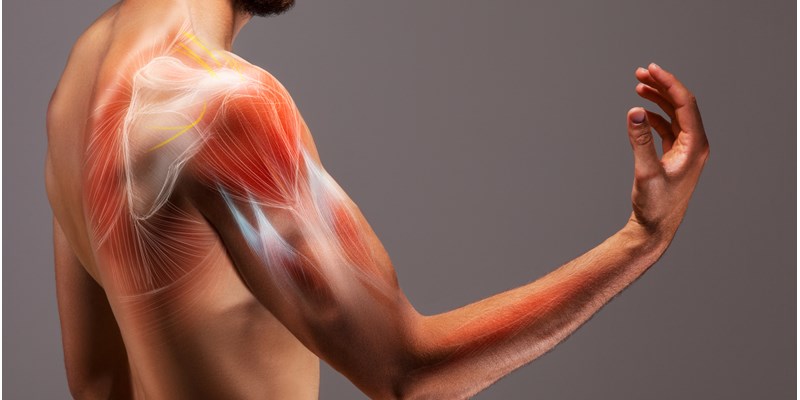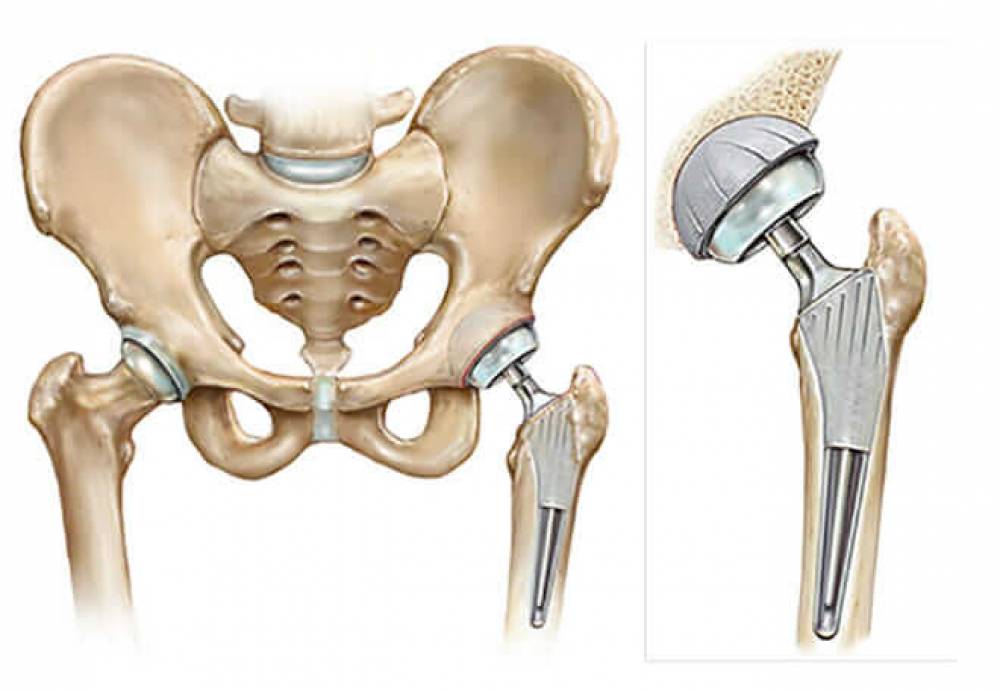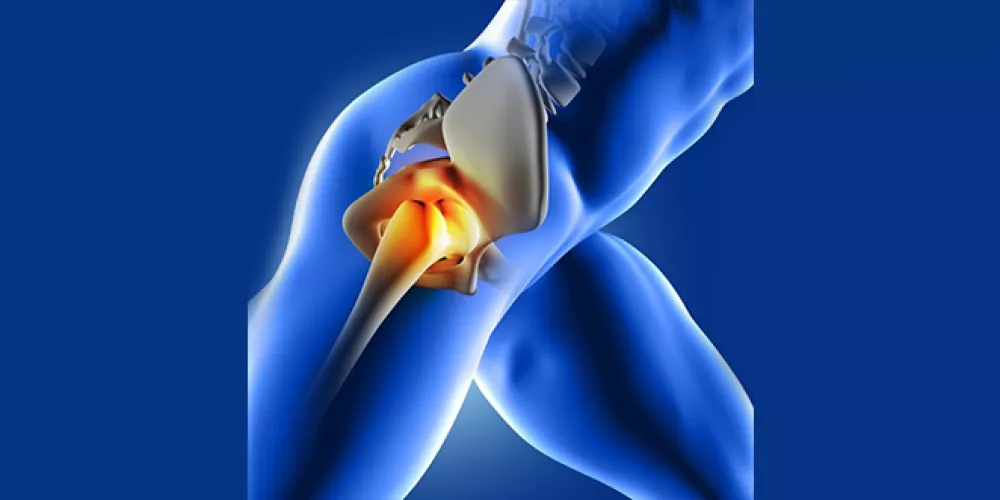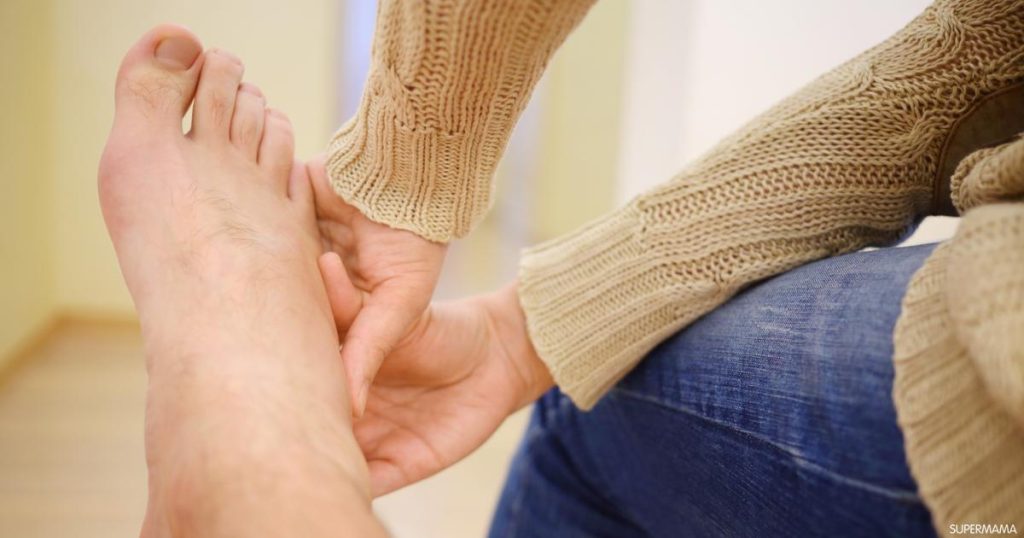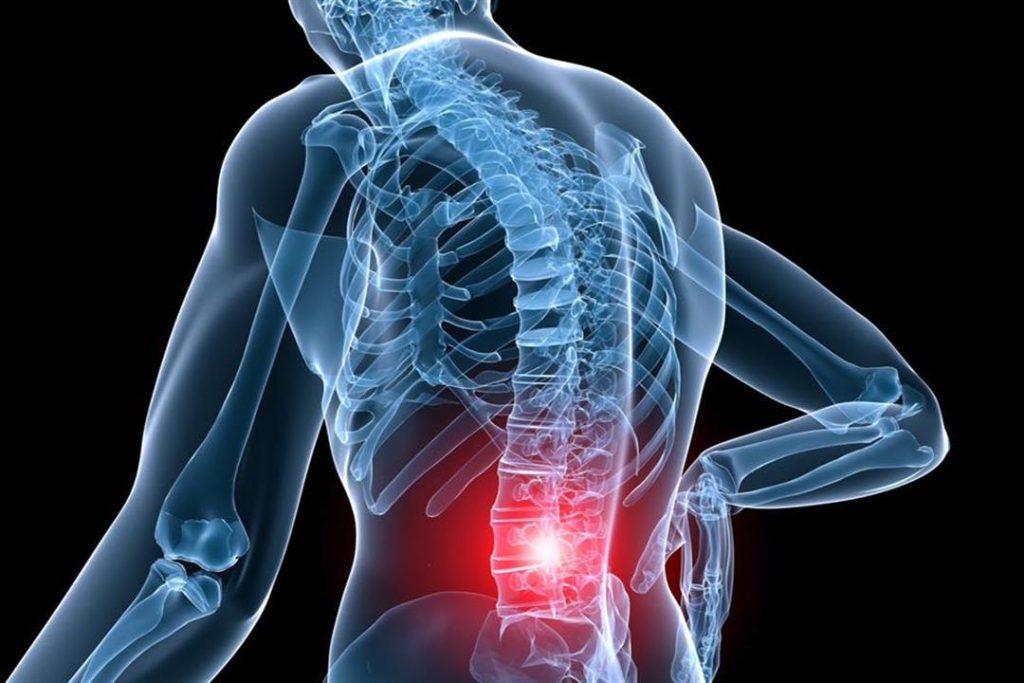Shoulder Ligaments: Learn about their Symptoms and Proper Treatment! What are shoulder ligaments?
أخر تحديث :
Shoulder Ligaments
Shoulder ligaments are the soft tissues that provide the shoulder joint with the ability to move and stability. Ligaments are an essential part of the shoulder joint structure and work to stabilize the bones and surrounding tissues. They help prevent slipping and abnormal separation of the bones and maintain joint stability during movement.
Shoulder ligaments consist of a group of strong and flexible fibers that connect the bones that make up the joint. These fibers provide support and stability to the joint and help withstand the pressure and tension resulting from movement and daily activities.
Shoulder ligaments are susceptible to injury and tearing due to excessive stress or repeated stress on the joint. Partial or complete tearing of the ligaments can occur as a result of acute injuries such as falls or sports injuries. Gradual tearing of the ligaments can also occur due to gradual wear and tear or chronic inflammation in the joint.
Symptoms of shoulder ligament tear can range from pain and swelling to loss of the ability to move the shoulder normally and deformity in the joint’s shape. Untreated ligament tears can lead to arm weakness and deterioration of the joint’s condition.
The treatment of shoulder ligament tears depends on the degree and severity of the tear. Conservative treatment may be applied, including rest, massage, icing, and physical therapy to strengthen the muscles around the shoulder. In severe cases, surgical treatment may be necessary to repair or replace the damaged ligaments.
It is essential to consult with specialized doctors and rely on the available medical services in specialized hospitals for accurate diagnosis and appropriate treatment of shoulder ligament tears. Proper treatment is necessary to avoid complications and ensure the restoration of normal shoulder mobility and stability.
What are the symptoms of shoulder ligament tears?
Shoulder ligament injuries are common injuries that can affect people of all ages. These injuries can cause several symptoms that should be monitored and managed properly. One of the main symptoms of a shoulder ligament tear is pain. The affected individual may experience pain in the shoulder and swelling, and the pain usually worsens at night and when lying on the affected shoulder. Pain may also increase with arm movement or shoulder shaking. Weakness in the arm and radiating pain down the arm may accompany the pain.
Patients may also notice a “clicking” sound when moving the injured shoulder. This can be accompanied by difficulty in raising the arm and performing daily activities normally. Pain and swelling in the shoulder may also be present. When there is a tear in the tendons inside the shoulder joint, it can lead to chronic shoulder pain.
Shoulder ligament tears can occur for several reasons. They can result from a fall, which can cause a fracture of the collarbone or a dislocated shoulder, leading to ligament tears. Sudden sharp pain in the shoulder or sudden pain is indicative of ligament tears. This may be accompanied by significant swelling around the shoulder joint or large bruises, which may indicate an infection in the joint.
If a shoulder ligament injury is left untreated, the condition can worsen, and the ligament tear can increase with repetitive arm movements or sudden injury during sports activities. Therefore, it is essential that the injury is properly examined and diagnosed by a specialist doctor. The treatment of shoulder ligament tears may involve the use of physical therapy and strengthening the muscles around the shoulder, and in some cases, surgery may be required to repair the torn ligaments.
In summary, a shoulder ligament injury is a common condition that can cause many bothersome symptoms. It is essential to handle this injury correctly and in a timely manner to avoid worsening the condition and promote recovery. Individuals with symptoms of shoulder ligament tear should consult a specialist doctor for a proper diagnosis and the appropriate treatment.
What is the treatment for shoulder ligament tear?
A shoulder ligament tear is a common injury that can occur for various reasons, such as sports-related injuries or accidents. Common symptoms of a shoulder ligament tear include severe pain, swelling, weakness, and difficulty in movement. The treatment of shoulder ligament tear depends on the severity of the injury and the type of tear.
In the case of a simple or partial tear of the ligaments, it can be treated through physical therapy and rest. This includes performing physical therapy exercises to strengthen the muscles around the shoulder and improve its mobility. Anti-inflammatory medications and ice application may also be prescribed to alleviate pain and swelling.
In cases of complete ligament tears, surgical treatment may be necessary. Arthroscopic surgery is used in many cases to treat shoulder ligament tears. This surgery involves inserting small instruments through small skin incisions to repair the torn ligaments. This type of surgery is less invasive and requires less recovery time compared to traditional surgery.
Additionally, corticosteroid injections may be used to alleviate the pain caused by a shoulder ligament tear. These injections contain anti-inflammatory substances and are injected directly into the shoulder. Multiple injections in a year are recommended, and the recommended dosage should not be exceeded as prescribed by the doctor.
Rest and immobilization of the shoulder are crucial factors in the treatment of shoulder ligament tears. In cases of tendonitis without tearing or cutting, it can be treated with anti-inflammatory medications, medical drugs, and physical therapy. Shoulder braces or stabilizing devices may also be used to provide support and stability to the injured shoulder.
In general, the evaluation of a shoulder ligament tear should be done by a specialist doctor, and the appropriate treatment plan should be followed. The level of injury and accompanying symptoms should be considered to determine the most suitable treatment for each case.
What are the symptoms of shoulder tendonitis?
Shoulder tendonitis is a condition that affects the shoulder joint and causes pain and difficulty in movement. Tendonitis can affect the tendons of the shoulder and the tendon sheath, which are two common conditions that occur in the shoulder area.
Common symptoms of shoulder tendonitis include pain, swelling, and difficulty in moving the shoulder. The patient may experience mild pain when moving the shoulder, and the pain may worsen after a period of rest or even after exercise, not during it. A cracking or popping sensation known as tendon crepitus may occur with every movement. Pain may be accompanied by tenderness in the affected joint.
Shoulder tendonitis can result in difficulty moving the shoulder and arm. Full range of motion may be challenging, and the patient may experience stiffness and limited mobility, especially if the tendonitis is in the shoulder joint. Pain may radiate to the chest and backbones, and it can intensify over time and increase after the cracking noise when moving the shoulder.
Women are more prone to shoulder tendonitis, as it typically affects the tissues around the shoulders, wrists, fingers, hips, ankles, and feet. This is partially due to the daily activities they engage in, which may put additional stress on the joints. The shoulder joint is a ball-and-socket joint, meaning it has a wide range of motion. Therefore, conditions affecting the tendons and surrounding tissues may cause pain and limited mobility. Shoulder tendonitis can develop due to excessive stress, direct injury, or the aging process.
It is essential that shoulder tendonitis is diagnosed by a specialist doctor who can conduct the necessary examinations and determine the appropriate treatment. Treatment may include advice on performing simple exercises to strengthen the muscles around the shoulder and improve flexibility. The doctor may also recommend physical therapy or medication to alleviate pain and swelling. In more advanced cases, surgery may be necessary to repair damaged tendons or remove inflamed tissues.
In general, preventing shoulder tendonitis involves regular exercise to strengthen muscles and improve flexibility, avoiding excessive stress on the shoulder, and taking preventive measures during daily activities that require intensive shoulder use.
In conclusion, shoulder tendonitis symptoms should be taken seriously, and appropriate treatment should be sought. Early diagnosis and immediate treatment can help prevent the condition from worsening and improve the quality of life.
How long does it take to heal a torn ligament?
A torn ligament is a common injury that can occur in the body, and individuals may sustain ligament tears due to sports injuries or everyday accidents. Ligaments are the tissues responsible for connecting and stabilizing joints, playing a crucial role in supporting and stabilizing joints.
The body deals with a torn ligament through a process called fibrosis, where the body begins to form fibrous tissues to compensate for the torn ligaments. The fibrosis process usually takes from four to six weeks, and this period is essential for natural healing. To promote the fibrosis process and enhance natural healing, joint immobilization is used. Joint immobilization helps reduce movement and loading on the injured joint, which in turn stimulates the fibrosis process and promotes healing.
In cases of severe ligament tears, treatment may involve splinting the injured joint for two weeks, followed by the use of a functional brace that allows partial joint movement. This treatment depends on the severity of the injury and its impact on the patient’s mobility and daily function.
The full recovery time for an ankle ligament tear depends on several factors, including the severity of the tear, the type of injury, the extent of direct treatment, and appropriate rehabilitation. When an ankle ligament tear is treated from the outset by immobilizing the ankle and placing the foot in a cast without putting any weight on the injured foot for a period ranging from 4-6 weeks, the patient begins a rehabilitation program to regain motion and strength in the ankle.
Mild ankle ligament tears often resolve within about four weeks from the time of the injury, and patients can return to their normal activities. However, in cases of complete ligament tears or avulsion fractures, surgical treatment may be necessary for recovery. The recovery period for surgical cases typically ranges from 12 weeks to 6 months, depending on the complexity of the condition and other factors.
As for hand ligament tears, the recovery duration depends on the severity, type, and location of the injury. Minor hand ligament injuries may heal within two weeks or less, while more severe inflammation may take from 12 to 16 weeks to recover.
In conclusion, the treatment for ligament tears should be based on the assessment by a specialist doctor and the individual needs of the patient. Patients with ligament tears should follow the doctor’s instructions and the prescribed treatment and rehabilitation program to ensure proper healing and the restoration of normal joint function.
Do ligament tears show up on X-rays?
Ligament tears are a common injury that occurs when a joint experiences excessive force or overstretching, leading to the tearing of ligament fibers. Ligament tears can occur in any joint in the body, but ligament tears in the knee are one of the most common injuries.
When a ligament tear occurs in the knee, common symptoms include severe and sudden pain in the affected joint, significant swelling in the injured joint, reduced movement and function, such as an inability to walk normally, and the appearance of bruising in the affected area. If the symptoms are severe and persistent, immobilizing the injured area with a splint or cast may be recommended.
X-rays are typically ordered to check for bone fractures associated with ligament injuries since ligament injuries can sometimes result in small fractures in adjacent bones.
To determine the extent of ligament tears and identify specific damage within the joint, magnetic resonance imaging (MRI) is often recommended. MRI is one of the most important diagnostic tools for diagnosing ligament tears, as it can provide detailed and clear images of the ligamentous tissues and surrounding structures.
Through MRI, doctors can assess the extent of ligament tears and determine the appropriate treatment. Patients may be directed to physical therapy to strengthen the muscles around the joint and improve mobility, or surgery may be recommended in cases of severe ligament tears that do not respond to traditional treatment.
In summary, ligament injuries may appear on X-rays by detecting bone fractures associated with the ligaments, while magnetic resonance imaging (MRI) is a more detailed and accurate diagnostic tool for assessing the extent of ligament tears and specific damage within the joint.
Do Shoulder Ligament Tears Require a Cast?
Shoulder ligament tears are a common condition that occurs when the joint is subjected to excessive stress or severe tension. Ligament tears can result from factors such as sports injuries, falls onto the shoulder, or sudden and forceful shoulder movements. Individuals with torn shoulder ligaments often experience symptoms such as severe pain, swelling, and weakness in shoulder movement.
In some cases, torn shoulder ligaments may require the use of a cast to stabilize the joint and improve the healing process. However, not all ligament tears necessitate the use of a cast. This depends on the severity of the tear and its impact on shoulder functions.
In mild cases, torn shoulder ligaments can be treated by strengthening and rehabilitating the joint through physical therapy sessions. This includes a set of exercises aimed at strengthening the muscles surrounding the shoulder and restoring its natural range of motion. Muscle strengthening devices or straps may be used to stabilize the joint and reduce pressure on the injured ligaments.
However, in more complex and severe cases, it may be necessary to apply a cast to immobilize the joint and limit excessive movement that could further damage the ligaments. The duration of wearing the cast is determined by the doctor based on the severity of the tear and its impact on shoulder functions. It may take several weeks or even months, depending on the condition.
It is important for the tear to be regularly monitored and followed up by a specialized doctor. In some severe cases where the ligaments cannot naturally heal or full shoulder function cannot be restored, surgical treatment may be required.
In general, patients with torn shoulder ligaments should consult a specialized doctor to assess their condition and determine the appropriate treatment. Some cases may require a cast to stabilize the joint and expedite the healing process, while others can recover through physical therapy and strengthening exercises.
What Causes Shoulder Tendonitis?
Shoulder tendonitis is a common condition that can occur due to repetitive movements or overuse. This inflammation happens when the shoulder tendons are subjected to continuous stress and excessive pressure, leading to inflammation and tendon damage.
There are several factors that can cause shoulder tendonitis. It can result from sports injuries, such as falls or strong impacts on the shoulder. It can also occur due to repetitive and excessive use of the tendons, where the shoulder experiences constant pressure and repetitive movements for an extended period. People who engage in certain sports like basketball or swimming are at risk of developing shoulder tendonitis due to the repetitive motions they perform.
Muscle weakness is also an important factor in the development of shoulder tendonitis. When the muscles are weak, they are unable to withstand the pressure and repetitive movements of the shoulder, increasing the likelihood of tendon inflammation. Common symptoms of shoulder tendonitis include pain in the shoulder, stiffness, and difficulty in movement, especially if the inflammation affects the shoulder joint.
Best Doctor for Shoulder Tendonitis
In the field of shoulder tendonitis treatment, Dr. Amr Amal is considered one of the best doctors in Egypt. He has extensive experience in orthopedic and joint surgery and specializes in treating various shoulder problems, ranging from shoulder fractures to joint degeneration.
Dr. Amr Amal provides a range of treatment options for his patients, including medication, local injections, arthroscopic surgery, and various shoulder surgeries. He also performs stabilization surgeries using the latest medical techniques to treat shoulder problems.
Dr. Amr Amal is known for his effective management of shoulder nerve inflammation, helping patients regain full mobility and relieve continuous pain. He relies on the latest medical technologies and innovations in the treatment of shoulder tendonitis.
Additionally, Dr. Amr Amal deals with many other bone and joint-related conditions, such as knee osteoarthritis, artificial joint replacements, tendon, and nerve decompression surgeries. He also treats sports injuries and utilizes knee, shoulder, and spinal endoscopy to diagnose and treat various conditions.
Through accurate diagnosis and the use of the latest medical techniques, Dr. Amr Amal strives to provide the best healthcare for his patients. He is committed to delivering exceptional care and aims to improve the quality of life for his patients while alleviating their pain.

